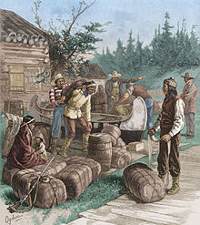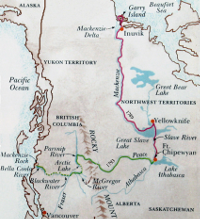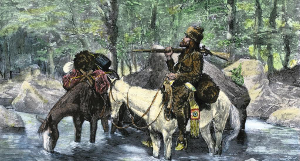The Fur Trade in North America
England and France were on opposite sides of the Europe-focused Nine Years' War from 1688 to 1697; in the middle of this war, New France shut down all of its fur trading posts out west. A subsequent war, with the Fox, erupted in 1712, disrupting the fur trade again. 
Trading returned somewhat to normal in 1730 and continued in that fashion until another war between France and Great Britain, this one taking place in both Europe and North America. The North American conflict, known as the French and Indian War began in 1754. Many fur traders took up arms to fight for their respective countries. In 1760, Great Britain conquered New France and took over all French fur trading operations in that large territory. Near the end of the war, France gave up all of its lands west of the Mississippi River to Spain. The following year, the British won the war. The British fur trade continued after peace had been declared, and British traders built a another series of forts and trading posts. One very influential fur trading company at this time was Finlay, Gregory & Co. Another war, the Revolutionary War, interfered with the fur trade again, particularly around the Great Lakes. The Treaty of Paris of 1783 ended that war. 
In the year following the official end of the war, a group of interested parties founded the North West Company (the traders of which were called "Norwesters"), which issued 16 shares. Some partners left early on and formed the General Company of Lake Superior and the South; they were replaced, and the number of partners expanded. Both new companies looked to expand as quickly as possible. Meanwhile, the Hudson's Bay Company (now owned by Great Britain) carried on building forts and trading posts. Finlay, Gregory & Co. and the North West Company merged in 1787. The merged company reached a total of 117 trading posts in 1800. 
Scottish explorer Alexander Mackenzie was associated with the North West Company. The first European to travel from the east to the west coast north of Mexico, in 1793, Mackenzie was on a quest for the Northwest Passage, the fabled waterborne route from the Atlantic Ocean to the Pacific Ocean that was supposed to wend its way through northern waters. He had reached the Arctic Ocean four years before. Next page: American Expansion > Page 1, 2, 3, 4 |
|
Social Studies for Kids
copyright 2002–2025
David White



 A series of French explorers–most notably,
A series of French explorers–most notably, 
